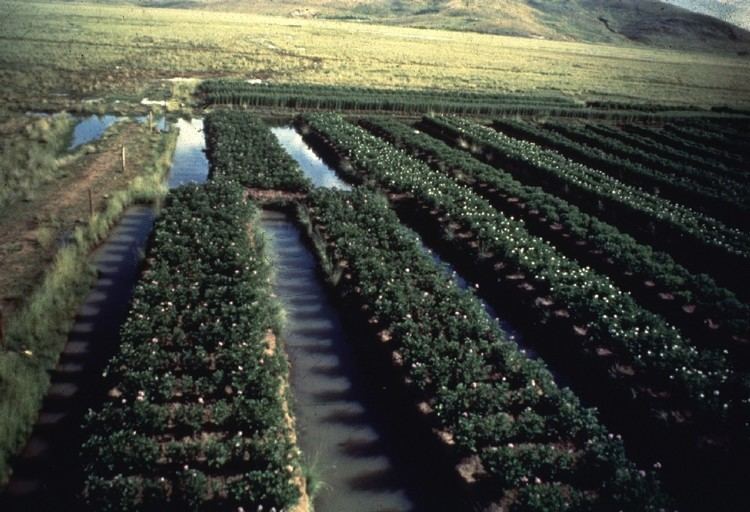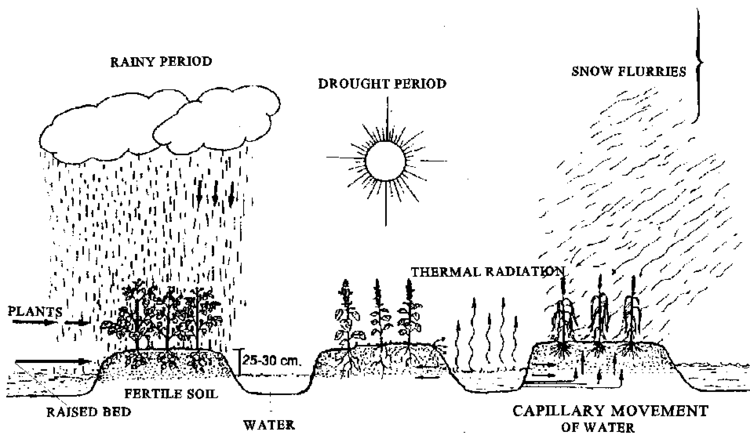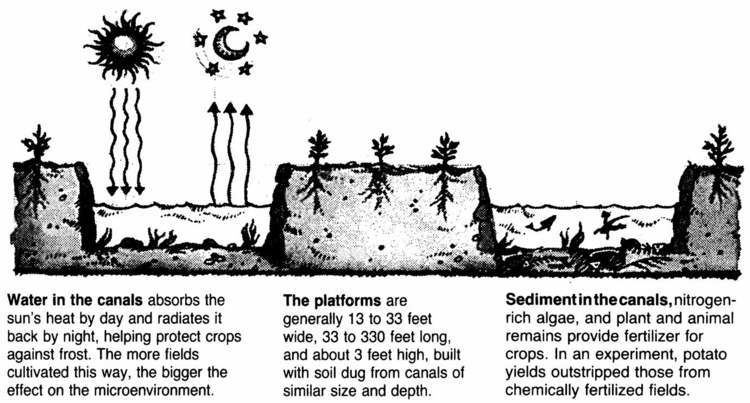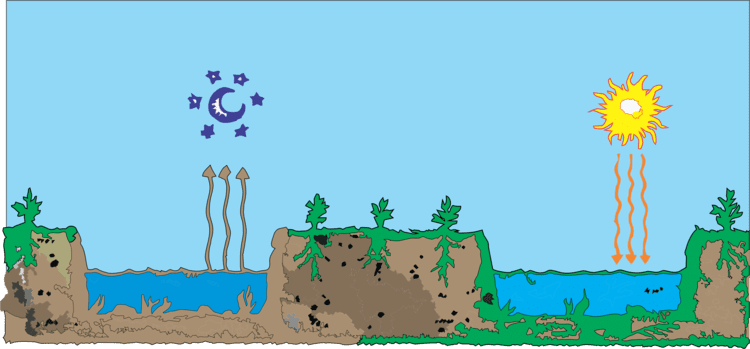 | ||
Similar Chinampa, Aquaponics, Aquaculture, Historical hydroculture | ||
Tecnolog a de los waru warus puno per
Waru Waru is an agricultural technique developed by pre Hispanic peoples in the Andes region of South America, from Colombia to Bolivia. It is dated around 300 B.C.
Contents

The technique has been revived in 1984, in Tiwanaku, Bolivia as well as Puno, Peru.
The technique combines raised beds with irrigation channels to prevent damage by soil erosion during floods. The technique ensures both collecting of water (either fluvial water, rainwater or phreatic water) and subsequent drainage. The drainage aspect makes it particularly interesting for many areas subjected to risks of brutal floods, such as tropical parts of Bolivia and Peru where it emerged. Waru waru has been used in many countries, like China.

Sistemas de producci n waru waru




References
Waru Waru Wikipedia(Text) CC BY-SA
